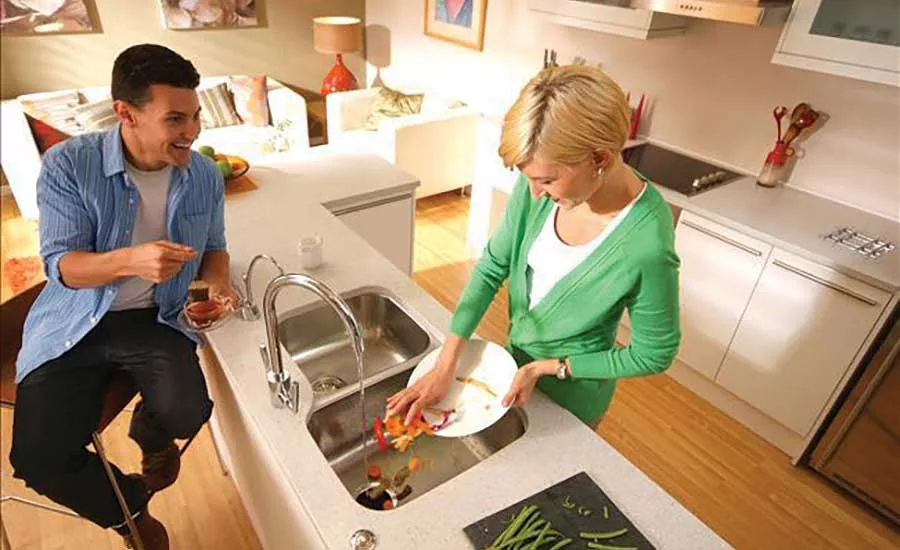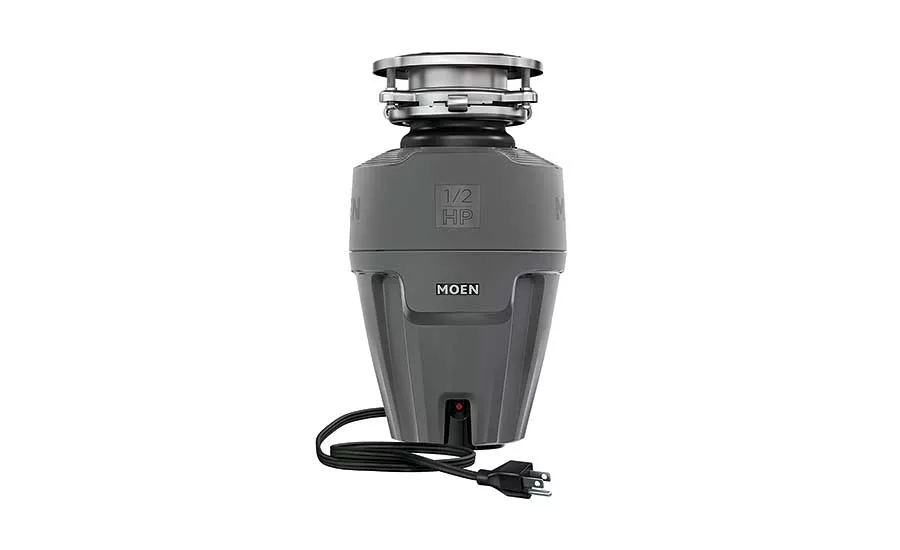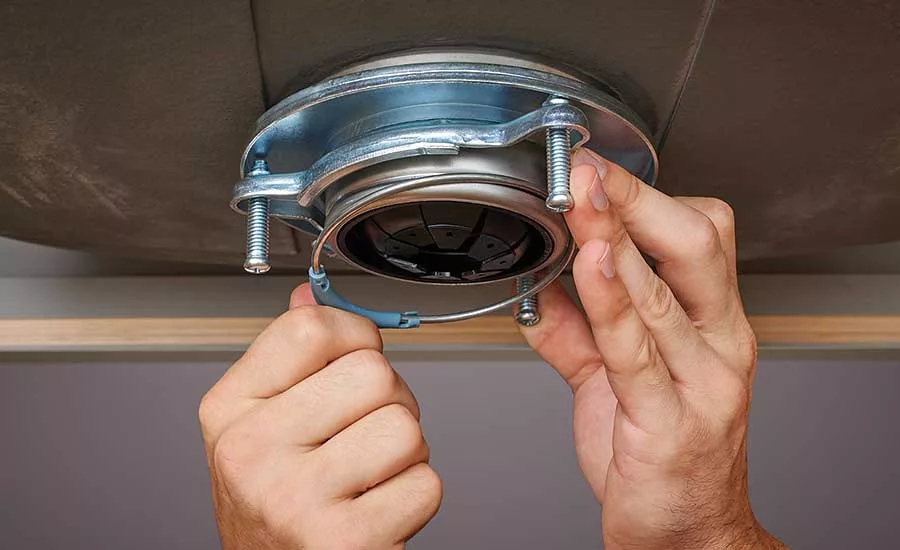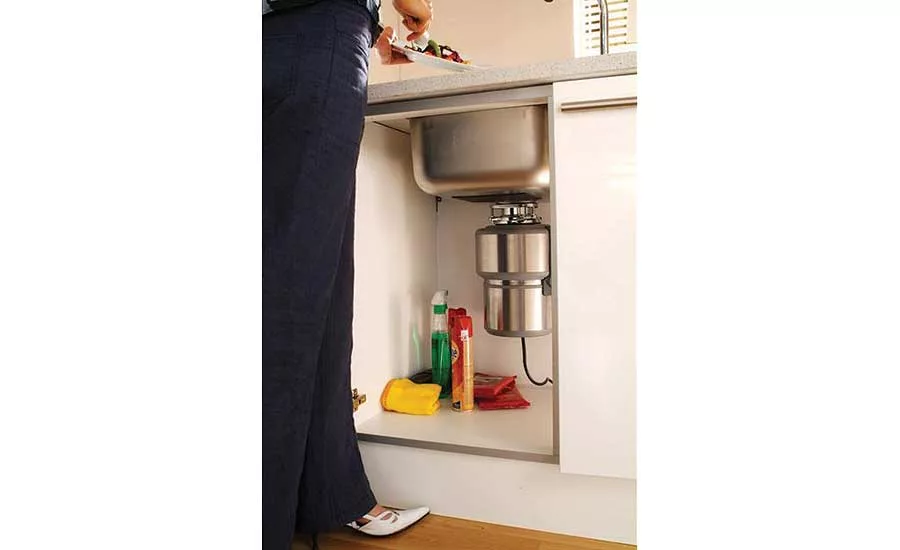What plumbers should know about food waste disposers
The benefits of food waste disposers are numerous.

Food waste disposers are present in three-quarters of all American homes, according to the U.S. Census Bureau. Photo courtesy of InSinkErator

The Moen EX50C garbage disposer features a 2,600 rpm permanent magnet motor designed to reduce jamming. Photo courtesy of Moen

The Moen EX75C’s Fast Track feature facilitates a quicker installation. Photo courtesy of Moen

Food disposers are more powerful than ever, yet their footprint under the sink is also shrinking as motor and grinding technology improves. Photo courtesy of InSinkErator
Food waste disposers, which grind and shred food waste so it can pass more safely through plumbing systems, are present in three out of four homes built within the last two decades in the U.S., according to the U.S. Census Bureau.
As one of the most popular and easily accessible plumbing accessories, they represent a potential source of income for plumbing contractors. And, just like many other electrically operated devices, they have undergone significant improvement over the years.
Benefits of food waste disposers
The benefits of food waste disposers are numerous.
They make food waste elimination “convenient and easy, reduce trash odor and volume, reduce drain system clogging, reduce trash bag costs by reducing trash volume, and reduce dishwasher soil loading,” according to the KitchenAid engineering team. “This provides time savings by reducing frequency of food waste transfer from sink to trash and reducing the frequency of emptying the trash.”
Chris Nealon, Moen’s senior product manager for disposers and sinks, says food waste disposers keep food products from ending up in a landfill and instead route them through the water-treatment system.
“According to a recent survey commissioned by Moen and conducted online by Harris Poll, half of Americans — 55% — have purchased a garbage disposer, and of those, roughly two in five — 39% — did so because it’s easier to use the disposer rather than throw away waste,” Nealon adds.
Joe Maiale, vice president, wholesale, for InSinkErator, says that for end users, in particular, there is a common misconception about disposers operating with blades.
“In reality, as contractors typically inform their customers, there are no blades. A disposer is more like a cheese grater than a blender, shredding and grinding food waste,” he explains. "What food waste is placed in a disposer, it lands on a turntable spinning at high speed. Centrifugal force and impellers attached to it push the food waste against the stationary ‘grater’ ring. The food is ground into small particles so that when it’s mixed with water, it can safely flow through plumbing and into the wastewater system or septic tank.”
Up-and-coming trends
Trends in food waste disposer design include improvements to motor technology and grinding ability, increased installability, decreased size and weight, reduced noise, and increased efficiency.
“We recently introduced a new installation innovation, Fast Track, which is designed to make installation of Moen disposers quick and simple, saving time and money,” Nealon says. “Additionally, Moen launched a ¾ hp, batch-feed model activated by a drain stopper. Batch feed models are ideal for kitchen islands, where an existing wall switch is unavailable or counter switch is not feasible.”
Units are also decreasing in size, KitchenAid’s engineering team says.
“KitchenAid just produced two ½ hp disposers that take up less room under the sink, which gives the consumer more storage alternatives.”
While electrical efficiency is less important for food waste disposers — which cost less than $0.50 per year to operate, on average — grinding power has increased significantly, which, in turn, helps cut down on the amount of water needed to grind food.
“When it comes right down to it, the motor in a disposer is the key to performance,” Maiale says. “All InSinkErator disposers — from standard to premium — are built with rugged and dependable Dura-Drive induction motors. Today, disposers use a minimum amount of water and electricity. On average, disposers use about 1 gallon of water per person per day.”
“All Moen disposers feature VORTEX permanent magnet motor technology,” Nealon says. “VORTEX provides high rpm [grinding] to help to reduce jamming, while a continuous feed means the disposer continues to grind as long as power is on.”
What plumbers need to know
While some homeowners choose to install their food disposers themselves, manufacturers caution against it.
“Pro installs are recommended,” KitchenAid’s engineering team says. “Disposer installation can be difficult, time-consuming and hard on the back for the DIYer.”
“Professional plumbers are highly trained professionals whose reliable installations ensure that products will perform for years,” Maiale says. “With an appliance that serves as important a function as a food waste disposer, it’s a smart move to use a professional for installation.”
Instead, manufacturers are designing food waste disposers with the plumbing professional in mind.
“Our newest line of disposers includes Fast Track technology for easy installation,” Nealon says. “The system incorporates enhanced features such as a Simple Snap Tool to quickly secure the mounting assembly; an easy-open dishwasher inlet allows for an easy connection with no additional tools required; and a quick-disconnect removable power cord allows for optional hardwiring.”
As far as installation best practices go, “Reference the installation guide,” KitchenAid’s engineering team says.
“Choose disposers with features that simplify the installation process,” Nealon adds.
For end users, plumbers can and should pass on valuable tips from the manufacturers that will help increase food waste disposer life cycle and effectiveness.
“Use cold water before, during, and after disposer use,” KitchenAid’s engineering team recommends. “Don’t discard fats and oils into food waste disposers, don’t overload the disposer, clean it frequently, and follow disposer usage and maintenance instructions.”
Looking for a reprint of this article?
From high-res PDFs to custom plaques, order your copy today!








